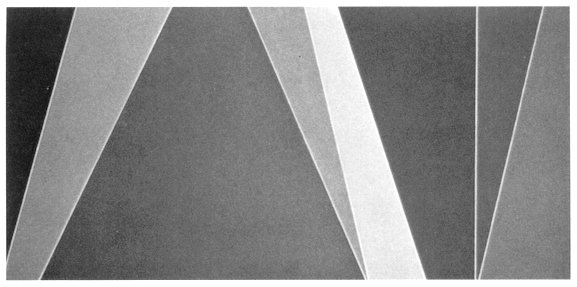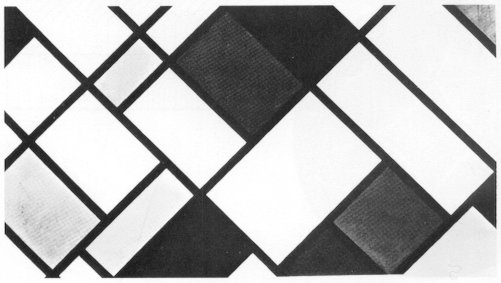|
(8) Free division This is a method to divide a screen without using any rule. When it is divided using a mathematical rule, an ordered and clear beauty of the KOHSEI (Basic Art & Design) is created. On the contrary, we can freely divide a screen in order to create a division which does not make us feel mathematical regularity. However, a sharpened sense of beauty should be felt in the freedom. The advantage of it is to make us a sense of freedom above all. It is related to the freedom not limited by anything and to the tastes excluding stiffness and narrowness of mathematical rules. Therefore, it is important to consider that the uses of equal distance, progression, symmetry, and so on should be minimized and that each form should have different directions, lengths, sizes, and shapes. In other words, we need to create as much variations as possible. It is important to seek a rich freedom avoiding rules. However, the "rules" defined here are mathematical rules, and the rules in arts and designs which can satisfy the following two conditions are even needed. · There are no identical shapes, and they are all different. (Variation rule) · There are some common elements, by which the whole is to be unified. (Unification rule) · For example,
the areas and shapes of the rectangles divided into small parts are all
different as shown in Figure 223 (Variation rule), while a direction is
unified by the two groups of the parallel oblique lines intersecting with
the right angle (Unification rule).
|

